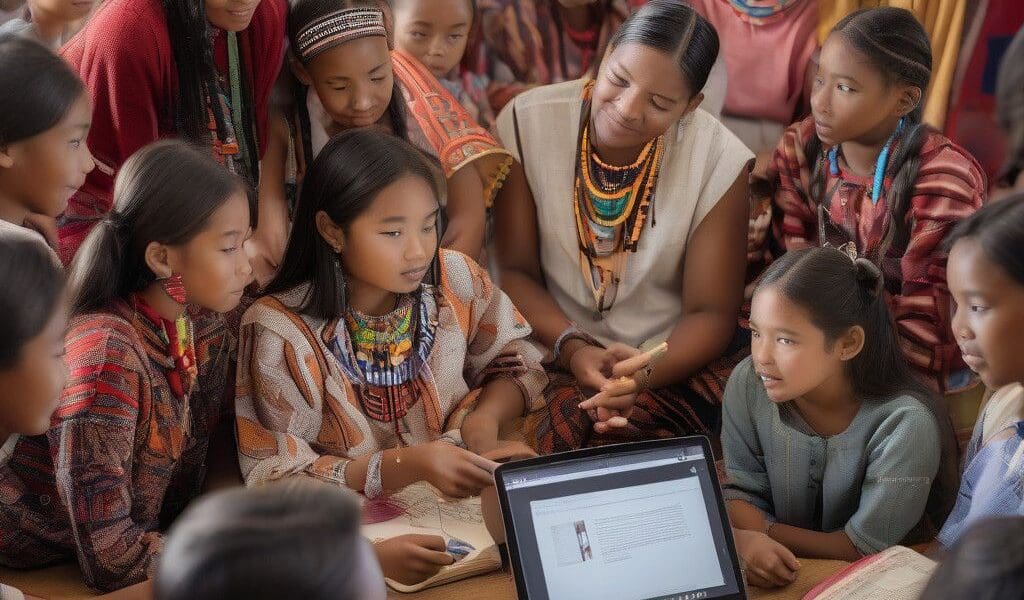NTIA's Initiative to Enhance Digital Literacy in Native Communities
The U.S. National Telecommunications and Information Administration (NTIA) is taking a significant step to address the digital divide affecting Native communities across the country. With over $45 million in grant funding available through the Digital Equity Capacity & Planning Grant Program, the initiative targets federally recognized American Indian tribes, Alaska Native corporations, and Native Hawaiian communities. This funding plays a crucial role in promoting digital literacy and expanding access to internet-enabled devices.
A comprehensive strategy underpinning this program highlights three core components essential for achieving digital equity: infrastructure for high-speed internet access, access to a range of internet-enabled devices, and crucial training and skills development for effective internet usage. While improving traditional infrastructure remains vital, the NTIA recognizes that challenges extend beyond merely providing connectivity.
The initiative aims to overcome barriers related to device access and digital literacy skills by providing training in areas such as cybersecurity awareness and network maintenance. Community well-being and educational opportunities are significantly influenced by digital literacy; this initiative highlights its necessity in enabling participation in the digital economy, particularly in domains like telehealth and distance learning.
For instance, telehealth services have become increasingly important, particularly in remote and underserved populations. Access to reliable internet allows community members to receive healthcare services digitally, reducing the need for long-distance travel and fostering improved health outcomes. Distance learning, on the other hand, opens up educational opportunities that may have previously been out of reach for many learners in these communities. However, limited access to both technology and essential skills hampers participation rates, especially in tech-related career paths.
This program not only addresses immediate digital barriers but also challenges the broader social inequities that have historically marginalized Native communities. With applications for the funding open until February 7, 2025, tribes can pursue projects that enhance digital literacy and ensure better access to essential devices. These grants hold the potential to create a more equitable future, breaking cycles of disadvantage and promoting increased participation in technology-driven careers.
An excellent example of how such initiatives yield positive outcomes can be seen with previous NTIA funding programs. Past projects like the Broadband Technology Opportunities Program (BTOP), which supported similar remote communities, demonstrated how targeted funding can result in a marked improvement in digital skills and access to necessary technology. Projects funded under BTOP led to increased rates of broadband adoption and usage in participating communities, proving that when resources are allocated effectively, real transformation can occur.
Looking ahead, the NTIA’s effort to enhance digital literacy in Native communities offers an opportunity to cultivate an informed, skilled population that can fully participate in the digital economy. The benefits extend beyond mere connectivity; granting opportunities also pave the way for community development, innovation, and ultimately, a higher standard of living.
The NTIA’s push for digital equity aligns well with broader federal goals aimed at increasing broadband adoption and improving overall digital literacy among underserved populations. As more communities aim to bridge the digital divide, initiatives like these are crucial in simplifying access to technology and education, ensuring that no one is left behind in the digital age.
The deadline for grant applications is fast approaching on February 7, 2025, marking a pivotal moment for tribes looking to invest in their communities’ future. By seeking funding through the NTIA’s program, these communities can not only enhance their technological infrastructure but can also lay the groundwork for better health outcomes, educational advancements, and increased participation in the digital economy.
Ultimately, addressing the digital skills gap, providing necessary resources, and increasing access to technology can create ripple effects that foster empowerment and connection in Native communities. As we look forward to the changes that this initiative will bring, it serves as a compelling reminder of the importance of equitable access to digital resources.








